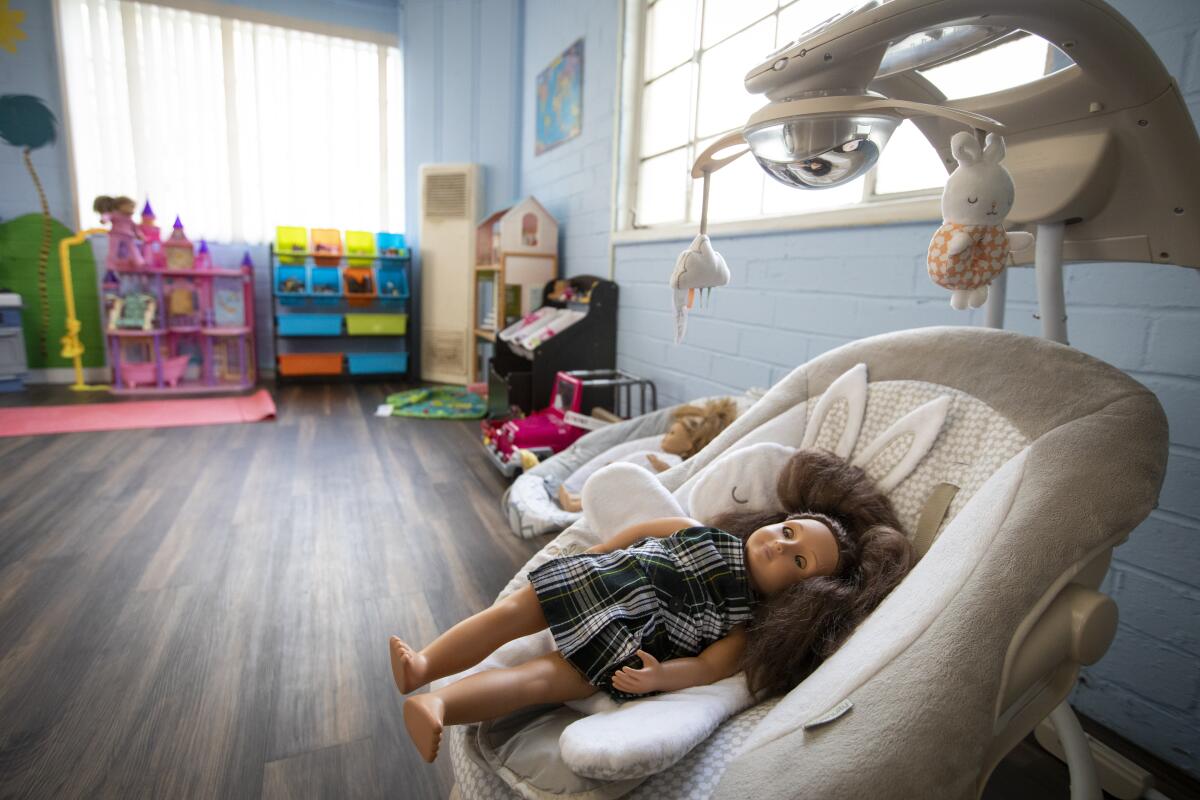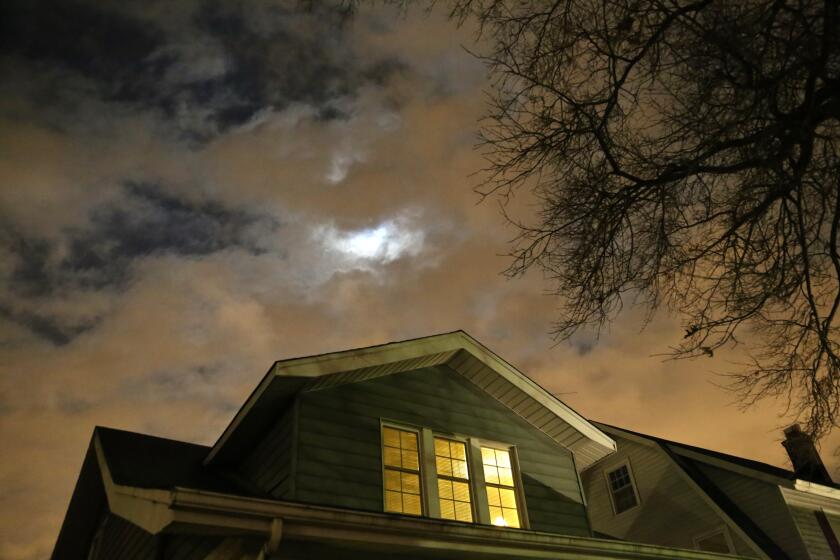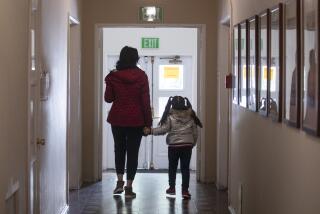Op-Ed: Angelina Jolie: Why children suffer more violence amid COVID-19

- Share via
We now know that many schools in California and other states won’t reopen for in-person classes this year. While this is judged necessary to slow the spread of the coronavirus, it has frightening implications for the psychological and physical well-being of vulnerable children.
School closures have led to a dramatic fall in reports of child abuse across the country since educators account for more than a fifth of reports of child abuse and neglect — more than any other category of reporter. One analysis found that monthly state totals of child abuse reports were an average of 40.6% lower in April and 35.1% lower in May compared with reports in those same months in 2019.
If schools remain physically closed, teachers may need training and support in identifying signs of abuse online. Family members and friends need to know that they are now the only in-person witnesses. As hard as it is for anyone to accept that someone they know or love is abusive, friends and families must have the moral strength to identify abuse and put the health and safety of a child above all else.
At the same time, we’ve seen a surge in domestic violence-related calls to police across the United States, which itself suggests heightened danger to children. In the majority of families in which a woman is battered, children are also battered. Here in California, the Partnership to End Domestic Violence is reporting more calls to service providers involving extreme physical violence, including strangulation.
At this rate, by the time we emerge from the pandemic, preventable violence will have scarred the lives — and even cost the lives — of children in our state and country.
For all the important steps taken to increase funding for programs and shelters to help domestic violence victims, no one seems to have an answer to how to step forward and meet this moment.
Since the coronavirus outbreak closed schools and largely hidden children at home, the reports of suspected abuse have dropped by as much as 50%.
Across America, child protection agencies are conducting fewer visits to vulnerable children. Access to essential domestic violence services, and in some areas court proceedings that can provide additional protection, is harder than ever. The United Nations Secretary-General António Guterres has gone so far as to call for a “ceasefire” in domestic violence globally.
Before the pandemic, an estimated 10 million children in America were exposed to domestic violence annually. This was already a child health emergency. That violence against children can be happening on such a scale without it being our most urgent priority reveals the extent to which it is normalized.
Victims of domestic violence often face a culture of disbelief, compounded by a lack of specialized training for those entrusted with decisions about the welfare of children. Fewer than half of child welfare agencies in America engage in universal screening for domestic violence in child abuse cases, and fewer than a quarter require caseworkers to receive domestic violence training or any formal training in working with perpetrators of violence. And in the vast majority of states in America, judges handling domestic violence cases are not required to have training in domestic violence.
Nor is it widely understood that a parent committing domestic violence against the other parent in front of a child is a form of child abuse. Or that children who witness or are victims of violence “can show symptoms of post-traumatic stress disorder similar to those of soldiers coming back from war,” in the words of the U.N. special representative on violence against children.
These blind spots could not be more serious. The Centers for Disease Control and Prevention estimated that 1,720 American children died from abuse or neglect in 2017, although it notes that the actual figure is likely to be much higher because there is no national register or a standard for categorizing abuse-related deaths.
According to the Justice Department, 24% to 45% of those cases involved families who were already known to child protective authorities because of earlier problems. In the U.S., an estimated 58,000 children a year are court-ordered into unsupervised contact with a physically or sexually abusive parent following divorce.
Isolation from coworkers and friends and the stress of an unprecedented health crisis could increase risk for those in abusive relationships.
What is at stake is the mental health, physical safety and, ultimately, the lives of children. Their needs in all these cases should be the central consideration — based on medical and trauma assessments, with appropriate screening for domestic violence specifically.
Science has laid bare the impacts of trauma and toxic stress on the bodies, brains and immune systems of children, and the long-term damage it may cause to their mental and physical health. Yet in America, only 16% of children with a mental health condition receive any treatment — and 70% to 80% of those who do, rely on schools to provide that service. This is one more way children are suffering as a result of the pandemic.
The long-term consequences of the COVID-19 pandemic for children won’t be understood for years. But we can already see the heavy cost in missed schooling, lost opportunities, mental anguish and an increased exposure to life-changing violence. It is time to elevate children’s needs to the forefront of the discussion of how we build a better society.
Angelina Jolie is a filmmaker and activist. The National Domestic Violence Hotline is available 24/7 at (800) 799-SAFE (7233) by call or text.
More to Read
A cure for the common opinion
Get thought-provoking perspectives with our weekly newsletter.
You may occasionally receive promotional content from the Los Angeles Times.












